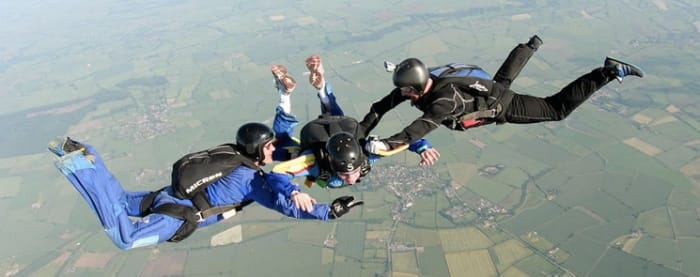Indian woman killed in skydiving accident

The beginner jumped from 10,000 feet but crashed to the ground after her parachute failed

A 26-year-old woman was killed on Thursday in a skydiving accident in Tamil Nadu in Southern India, raising concerns of poor infrastructure and a lack of adequate regulatory or safety measures for extreme sports in India.
The victim, Ramya, was killed at the Kamalapuram airport flying area in the industrial town of Salem when she crash-landed after her parachute failed to deploy correctly. She was rushed to the hospital but was declared dead on arrival by doctors. Four persons including three skydiving instructors from the Indian Skydiving and Parachute Association (ISPA) have been arrested, police officials said on Friday.
R Shakthivel, Superintendent of Police - Salem, told The Outdoor Journal, “She was a first-timer, having zero prior tandems or AFF jumps. The ISPA had the necessary permissions to hold skydiving sessions. However, it failed to provide proper medical facilities, including an ambulance. The victim could have been saved if she was provided immediate medical care.”
Ramya and her husband Vinod had registered for a skydiving camp held by ISPA, a non profit organisation based in their home town Bangalore, a few days ago.
Skydiving professionals from India expressed shock over the lack of basic emergency facilities and grief over the incident.
A Delhi-based skydiver with over 2000 jumps to his credit and who was aware of the accident's background said on condition of anonymity, "From what I know... As soon as Ramya deployed her parachute it had a premature brake release at 4,500 ft. She began spinning till a height of 300 ft from the ground. After that, one does not have enough time to react and she fell to her death."
Criticizing the ISPA for letting Ramya do a solo jump without adequate training, he added, "Ideally, a beginner should get at least two days of ground handling and they have to run through every possible emergencies. If she was given proper ground training, she would have known how to react in those circumstances. The instructors were not even in radio contact with her at the scene."
According to skydiving regulations: a beginner can start the sport in several ways, including a tandem, a static line jump or, in a more advanced situation, complete an AFF or Accelerated Free Fall course. During an AFF course, after several days of ground training, two instructors and the student exit the aircraft simultaneously and they form a 4-point contact. In simple words, they hold the student from either side. As a rule, the instructors at ground handling are the same people who accompany the participant during the jump.
"In this case, the ground handling and the flight were carried out by two different groups. This is a sign of gross mismanagement on part of the organisers. The instructors used an old and worn out canopy, which allegedly belonged to a deceased skydiver named Santhosh Nagaraj," he said.India's only female BASE jumper and professional skydiver Archana Sardana expressed her her grief by saying, "It's a case of sheer negligence and unprofessionalism on part of the instructors. It doesn't matter how many jumps you had, it depends on how responsible you are."
The victim's husband was contacted, but was not available for a comment.
Notes:
1. Organisations conducting extreme sports or similar activities in India are not recognised or regulated by any national or international bodies, unlike most countries in the world.
-
Insurance companies in India do not insure extreme or risky sports, including skydiving.
-
About 55 skydivers were killed worldwide in 2013.
Archive Image © Tony DanburyPlace: New Delhi, India





Comments ()